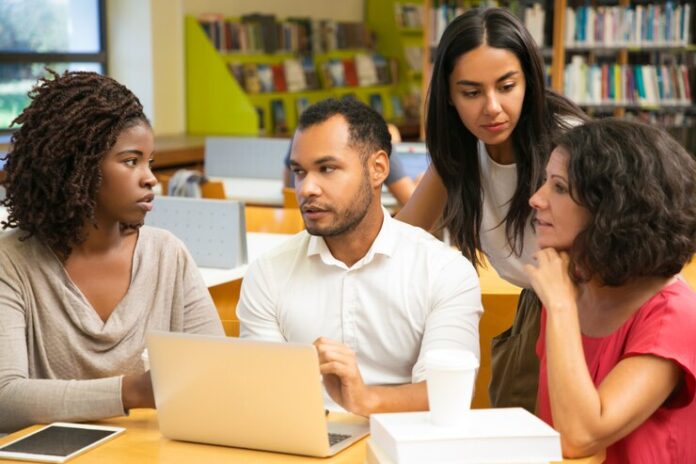In today’s classrooms, diversity is more prominent than ever before. Students come from various cultural, linguistic, socioeconomic, and learning backgrounds, making it essential for educators to adapt their teaching strategies to ensure that every student can succeed. By embracing diverse learning needs, fostering an inclusive environment, and utilizing varied teaching methods, educators can create a more engaging and effective learning experience for all students. Here are some top strategies for effective education in diverse classrooms.
1. Embrace Culturally Responsive Teaching

Culturally responsive teaching involves recognizing and respecting the cultural backgrounds of students, integrating these diverse perspectives into the curriculum, and using teaching methods that are inclusive of all cultures.
- Incorporate diverse materials: Use books, videos, and resources that reflect the different cultures represented in your classroom. This not only helps students feel valued but also broadens their understanding of the world.
- Understand students’ cultural backgrounds: Learn about your students’ traditions, languages, and experiences to make your teaching more relatable and meaningful.
- Encourage cultural exchange: Create opportunities for students to share their cultural practices, holidays, or traditions with the class, fostering a more inclusive and respectful learning environment.
2. Differentiate Instruction
Differentiated instruction is a teaching approach where educators tailor their lessons to meet the varied needs, interests, and abilities of students. This strategy helps ensure that all learners, regardless of their learning style or level, can access the content.
- Use flexible grouping: Group students based on their strengths, weaknesses, or interests. Rotating groupings allows for diverse interactions and helps students learn from each other.
- Vary your teaching methods: Offer lessons in multiple formats, such as visual, auditory, and kinesthetic. For example, you can use videos, hands-on activities, group discussions, and written materials to address different learning preferences.
- Adjust assessments: Provide alternative ways for students to demonstrate their understanding, such as oral presentations, projects, or visual representations, in addition to traditional tests.
3. Foster an Inclusive and Supportive Classroom Environment
Creating an inclusive environment is key to helping all students feel safe, valued, and respected. A positive and supportive classroom culture enhances learning and promotes social-emotional well-being.
- Set clear expectations: Establish clear behavior and academic expectations from the start. A predictable environment helps all students, particularly those who may need additional support, feel secure.
- Promote social-emotional learning (SEL): Integrate SEL into the curriculum to teach students about empathy, self-awareness, and how to manage emotions. This is particularly important for students from diverse backgrounds who may face challenges outside the classroom.
- Encourage collaboration: Promote teamwork and collaboration through group activities. This helps students develop interpersonal skills and learn how to work with individuals from different backgrounds.
4. Incorporate Universal Design for Learning (UDL)
Universal Design for Learning (UDL) is an educational framework that provides all students with equal opportunities to learn by offering flexible learning environments and multiple means of engagement, representation, and expression.
- Offer multiple means of representation: Present information in various ways, such as through text, audio, video, and interactive activities. This ensures that students with different learning styles can access the content.
- Provide different ways for students to express their understanding: Allow students to show what they know in different ways, whether through essays, presentations, or creative projects.
- Engage students with varied methods: Use games, technology, group discussions, or field trips to keep students engaged and motivated.
5. Use Technology to Enhance Learning
Technology can be a powerful tool for bridging gaps in diverse classrooms. By incorporating digital tools, teachers can personalize learning and provide more opportunities for student engagement.
- Utilize educational apps and platforms: Use apps that offer interactive learning experiences, such as language translation tools, math games, and virtual classrooms. This helps students work at their own pace and reinforces classroom learning.
- Create online learning communities: Use platforms like Google Classroom or Edmodo to encourage collaboration and communication among students outside the classroom. This is particularly helpful for students who may feel more comfortable expressing themselves in writing rather than in person.
- Access assistive technology: Provide tools like speech-to-text software, audio books, or screen readers to support students with disabilities and those who may face language barriers.
6. Encourage Active Learning and Student-Centered Approaches
Active learning involves engaging students directly in the learning process through activities such as problem-solving, discussion, and hands-on tasks. This approach is especially effective in diverse classrooms, where different students bring unique strengths and experiences.
- Use project-based learning: Encourage students to work on real-world projects that require collaboration and critical thinking. This fosters creativity and allows students to see the practical applications of what they are learning.
- Incorporate peer teaching: Have students work in pairs or groups to teach one another. This reinforces learning and allows students to learn from different perspectives.
- Provide choice and autonomy: Give students options in how they approach assignments and projects. This allows them to take ownership of their learning and make decisions based on their interests.
7. Offer Language Support for English Language Learners (ELLs)
In diverse classrooms, there may be students who are learning English as an additional language. Providing targeted language support ensures these students are not left behind.
- Use visual aids: Incorporate pictures, charts, and diagrams alongside verbal instructions to help ELLs better understand new concepts.
- Implement scaffolding techniques: Break lessons into smaller, manageable steps, and provide additional support where needed. This helps ELLs build their language skills gradually.
- Encourage peer support: Pair ELL students with fluent English speakers for collaboration. This fosters language development while promoting inclusivity.
8. Build Strong Relationships with Students
Developing positive relationships with students is crucial for their academic success and well-being. By understanding their needs, interests, and challenges, you can better support their learning journey.
- Take the time to get to know students: Learn about their backgrounds, interests, and goals. Show genuine interest in their well-being, which will help build trust and encourage engagement.
- Provide constructive feedback: Give timely, specific, and supportive feedback that helps students improve. Focus on strengths and areas for growth to encourage a growth mindset.
- Involve families and communities: Build partnerships with families and community organizations to better understand the challenges students may face outside the classroom. This can lead to more tailored support for each student.
Conclusion
In a diverse classroom, every student comes with a unique set of skills, experiences, and challenges. By implementing culturally responsive teaching, differentiating instruction, and using technology, educators can create a learning environment that meets the needs of all students. Fostering inclusion, building relationships, and embracing active learning further contribute to student success. With these strategies in place, educators can support students in reaching their full potential while promoting a culture of respect, empathy, and growth.
FAQs
What is culturally responsive teaching?
Culturally responsive teaching is an approach that acknowledges and respects the diverse cultural backgrounds of students, integrating their cultural perspectives into the curriculum and teaching practices to make learning more relevant and effective.
How can I differentiate instruction in a diverse classroom?
Differentiating instruction involves tailoring teaching methods and content to meet the diverse needs of students. This can be achieved by offering various learning activities, adjusting the pace of lessons, and providing alternative assessments to suit different learning styles.
How can I support English Language Learners in my classroom?
Support ELLs by using visual aids, breaking lessons into smaller steps, incorporating scaffolding techniques, and pairing them with fluent speakers for collaborative learning. Additionally, providing language support tools and encouraging practice in a low-pressure environment can be beneficial.
What is Universal Design for Learning (UDL)?
UDL is an educational framework that aims to provide all students with equal opportunities to learn by offering flexible learning environments, multiple means of engagement, representation, and expression to accommodate various learning styles and abilities.
Why is building strong relationships with students important in diverse classrooms?
Building strong relationships fosters trust and engagement, creating a positive and supportive environment. When students feel valued and understood, they are more likely to be motivated, participate actively in class, and succeed academically.


